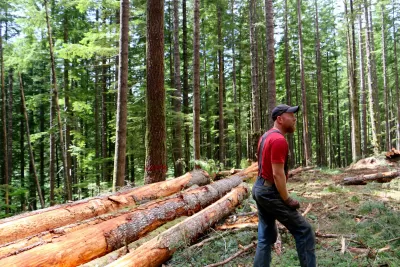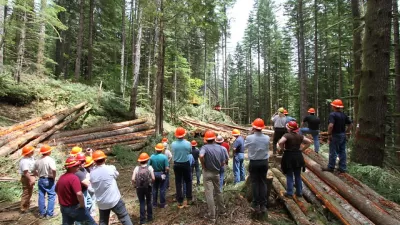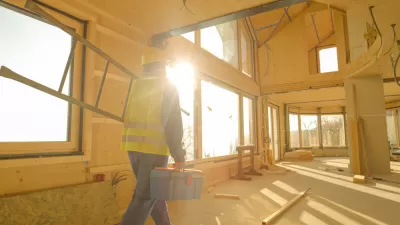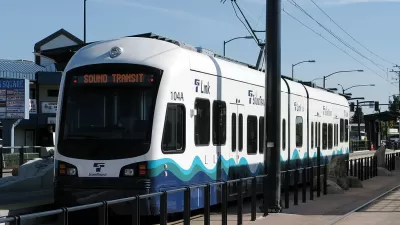Cross-laminated timber offers a multitude of environmental and economic benefits. With the state’s resources and Seattle’s construction needs, the city is the ideal location for mass timber production to take off.

"With vast timber resources and ready for retrofit facilities, the Pacific Northwest has an opportunity to lead a revolution in sustainable building and with the major challenges Seattle is facing around housing affordability and homelessness, our city can and should be at the center of demand for mass timber," writes Conor Bronsdon.
Cross-laminated timber is an ideal alternative to steel and concrete, argues Bronsdon. It performs well as a construction material, can be assembled quickly and easily at construction sites, and requires much less energy for production than steel.
Bronsdon notes that developments at the state and national levels are making cross-laminated timber a more viable option:
The passage of the Timber Innovation Act, officially signed into law in December as part of the national Farm Bill, is a big step for incentivizing the use of CLT. One of the most important provisions of the bill is that it provides annual matching grants to advance innovation in wood construction including prioritizing the use of funds to retrofit sawmills in areas of high unemployment.
He says this is an opportunity to revitalize the flagging economies of rural Washington communities dependent on the timber industry. Washington also last year changed its state building code to allow for mass timber to be used in taller buildings.
Bronsdon says that a partnership between environmental groups and the timber industry would encourage sustainable in-state production. "With responsible and economically incentivized forest management, we can change the calculus of deforestation, encourage replanting and continued harvesting as younger and lower grade trees can be used in mass timber products such as CLT."
FULL STORY: Seattle Should Lead on Mass Timber–and Solve Our Housing Crisis

Maui's Vacation Rental Debate Turns Ugly
Verbal attacks, misinformation campaigns and fistfights plague a high-stakes debate to convert thousands of vacation rentals into long-term housing.

Planetizen Federal Action Tracker
A weekly monitor of how Trump’s orders and actions are impacting planners and planning in America.

San Francisco Suspends Traffic Calming Amidst Record Deaths
Citing “a challenging fiscal landscape,” the city will cease the program on the heels of 42 traffic deaths, including 24 pedestrians.

Defunct Pittsburgh Power Plant to Become Residential Tower
A decommissioned steam heat plant will be redeveloped into almost 100 affordable housing units.

Trump Prompts Restructuring of Transportation Research Board in “Unprecedented Overreach”
The TRB has eliminated more than half of its committees including those focused on climate, equity, and cities.

Amtrak Rolls Out New Orleans to Alabama “Mardi Gras” Train
The new service will operate morning and evening departures between Mobile and New Orleans.
Urban Design for Planners 1: Software Tools
This six-course series explores essential urban design concepts using open source software and equips planners with the tools they need to participate fully in the urban design process.
Planning for Universal Design
Learn the tools for implementing Universal Design in planning regulations.
Heyer Gruel & Associates PA
JM Goldson LLC
Custer County Colorado
City of Camden Redevelopment Agency
City of Astoria
Transportation Research & Education Center (TREC) at Portland State University
Jefferson Parish Government
Camden Redevelopment Agency
City of Claremont





























